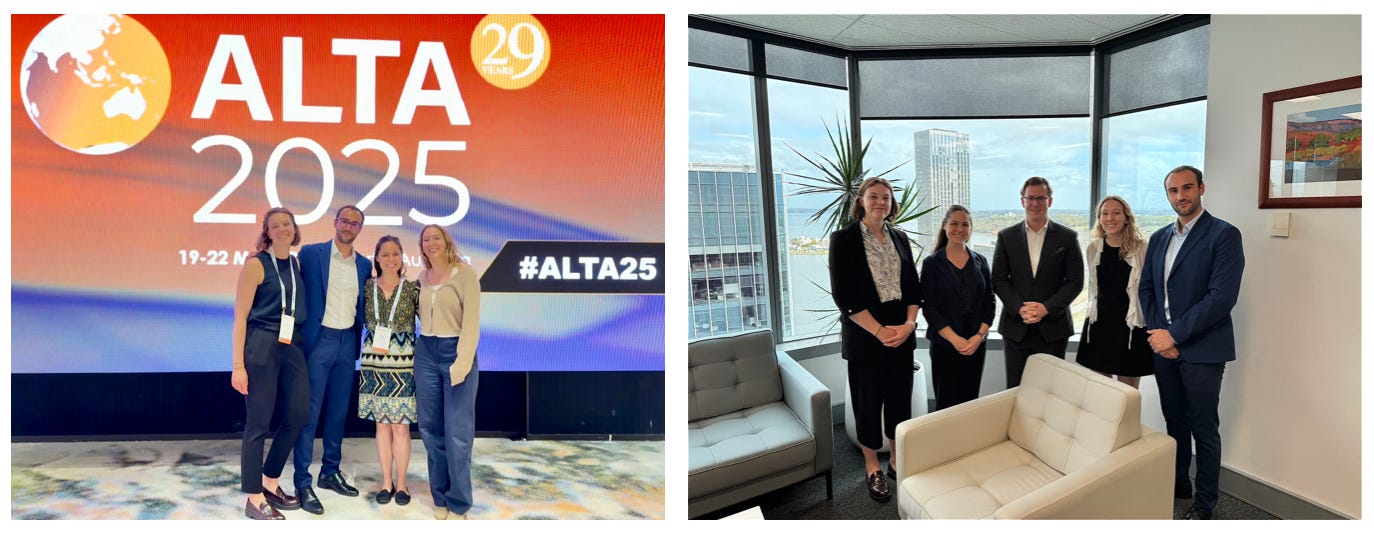Hacking for Defense (H4D) Meet Team ChipForce
Team Looks to Build Incentives to Prioritize U.S. Critical Minerals
In this latest installment of our spring Hacking for Defense (H4D) series at Stanford, we spotlight Team ChipForce, a dynamic six-person team working to rewire one of America’s most foundational vulnerabilities: access to secure, ethically sourced critical minerals.
Their problem statement is simple but urgent: the U.S. lacks effective market mechanisms and incentives to prioritize domestically produced critical minerals over cheaper, foreign-controlled alternatives. This gap leaves vital industries — from semiconductors to defense to EV batteries — exposed to adversarial supply chains.
Rethinking Demand Signals in the Critical Minerals Market
Even as the U.S. works to expand domestic mining operations, the lack of customer demand certainty, transparent pricing, and long-term procurement commitments stifles progress. Suppliers face steep fixed costs, while customers, often focused on price, lack tangible incentives to buy American.
Team ChipForce is developing strategies and market innovations that could help change this calculus. Their goal: support a financial and strategic rationale for companies to prioritize U.S. and allied-produced minerals, securing domestic supply chains and boosting national industrial resilience.
To push the project forward, Team ChipForce – whose travel was generously sponsored by the Common Mission Project and Lockheed Martin – sent a delegation to Australia for the ALTA Mining & Processing Conference and a packed schedule of stakeholder meetings. In just one week, they logged 30+ face-to-face interviews at 20 venues — ranging from federal ministries to processing plants — while also attending a School of Mines alumni forum and the launch of a new critical minerals exploration company. The trip deepened the team’s grasp of Australia’s pivotal position in the critical-minerals supply chain, spotlighted opportunities for tighter collaboration with the United States, the Republic of Korea, and Japan, and exposed them to market-building initiatives such as the Perth Critical Minerals Exchange, which enables the trading of strategic “small” commodities essential to defense technologies.
Meet Team ChipForce
Hypotheses Refined
Through 230 stakeholder interviews and expert consultations, Team ChipForce refined several of their initial assumptions:
China has a strategic chokehold on the critical minerals market, particularly in midstream processing.
This was strongly validated. Interviews confirmed that Chinese investors wield deep financial and political influence in the global critical minerals market - particularly by controlling more than 90% of processing for certain minerals. This influence was seen in Australia’s mining ecosystem, when an intentional oversupply of gallium from China caused prices to drop, and the primary gallium producer in Western Australia ceased operations. .
Companies are not willing to pay a “national security premium” for Western-sourced critical minerals.“Local project” designations can dramatically accelerate permitting and development.
This hypothesis was validated for both U.S. and Australian companies. All companies highlighted their responsibility to shareholders and the incentives to procure the cheapest critical minerals available. This implies intervention is needed to mitigate the cost differential between PRC-produced and Western-produced critical minerals. Validated through Australian examples, particularly in Perth, where local project status allowed expedited approvals that cut years off development timelines. This highlighted the value of replicable regional innovation hubs in the U.S.
Investors are hesitant to invest in mining projects due to the lengthy timelines and uncertainty surrounding the permitting process.
This was partially validated. Investors were discouraged by permitting timelines and approval uncertainty; however, they stated price and regulatory volatility were the biggest barriers to investing. Government support is necessary to mitigate this volatility and foster investment.
The U.S. government has strong, institutionalized engagement with mining and processing companies.
This hypothesis was invalidated. While promising efforts like those with EXIM and DFC exist, most engagement remains fragmented, informal, and reliant on individual policy advocates rather than consistent federal channels, indicating better coordination mechanisms are needed.
The Path Ahead
ChipForce is working to define what demand-side incentives could look like — such as tax credits, secure sourcing certifications, contract carve-outs, or pooled procurement across industries. Their efforts could help create a commercial and strategic logic for choosing U.S.-produced critical minerals over foreign-controlled alternatives.
Here are the other H4D Team blogs to date:
Team Hydra Strike
Team OmniComm
Team ArgusNet
Team Omnyra
All eight (8) H4D teams will present their findings at Stanford University on Tuesday, June 3, at 5:15 pm PT. You are invited to join in person or online via livestream. RSVP HERE to secure your spot and learn more about their innovative work.
The Hacking for Defense (H4D) program has been taught at 70 colleges and universities around the world and has created 72 startups that have generated 660 jobs and raised more than $350 million. To learn more about the H4D course at Stanford University visit h4d.stanford.edu; to learn more about H4D around the world visit h4d.us. To learn more about The Hacking for Defense® Manual by Jeff Decker, PhD, visit Amazon.










Happy to make introductions to the Ukrainian critical minerals industry. Also, have you guys spoken to John Matlin about magnets?